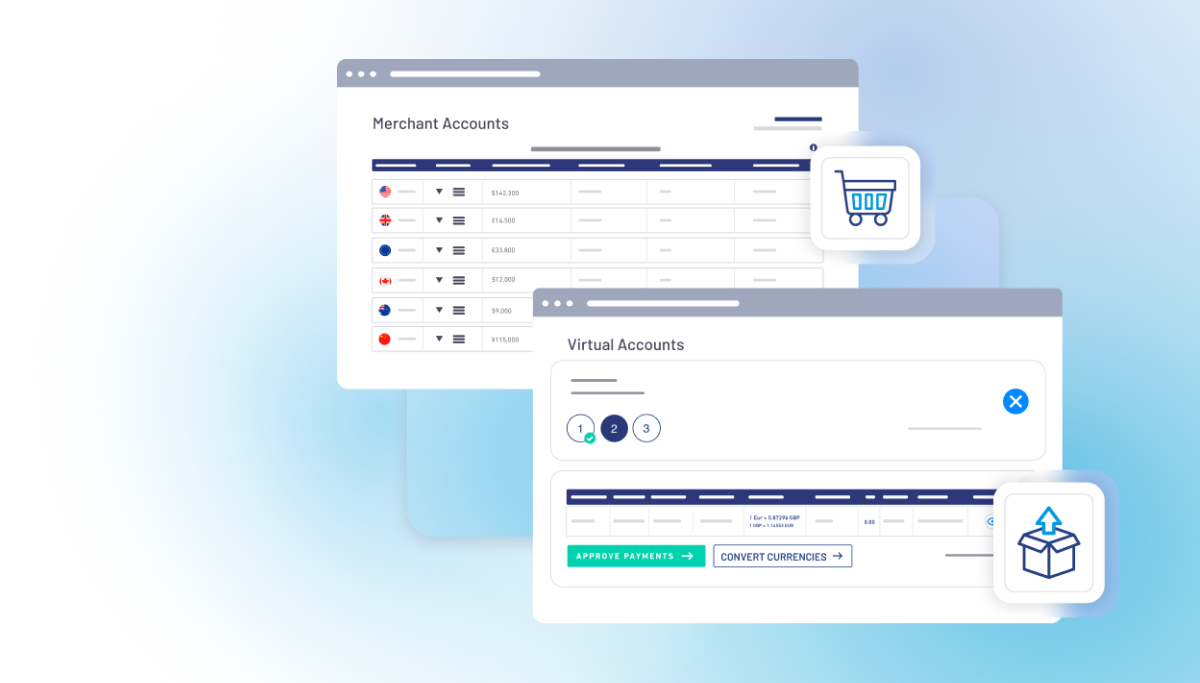Expanding internationally used to be a step-by-step process for a business, methodically building a presence (often a physical one) in a new country before selling into it. Of course, a successful business will still take a methodical approach to expanding into new territories, but the technical constraints of the past are much reduced now.
New technologies and platforms allow companies to grow at scale quicker than ever before, and be able to sell on a global level within a relatively short time. This lands treasury and finance professionals in a situation where they can be suddenly be required to collect and pay out in multiple currencies, and manage multiple currencies all at once.
6 ways treasury professionals can improve how they manage multiple currencies

Managing these international cash holdings and currency flows is fraught with difficulty, and the potential for inefficiencies. What practical steps can those responsible take to reduce costs, administration time, and increase their control and agility when managing multiple currencies?
1. Build a network of multi-currency accounts you control - on one platform
Businesses will often use multiple banks, or a patchwork of alternative providers, to manage different currencies. This leads to a disconnected network to manage, resulting in difficulties in even seeing what your international cash holdings are at any one time.
Reducing the number of these platforms – potentially down to one – is a key first step in managing multiple currencies. If you need to segregate funds (even within the same currency) in different accounts, then your platform should have that functionality too.
2. Have those accounts connected to a global payment network
Holding multiple currencies in a network of accounts you control is one thing, being able to pay and receive out of those accounts is another. To reduce the manual work of transferring funds or uploading and downloading payment files from your payment provider, choose a network that is automatically linked to a global payment infrastructure.
With this capability, you can now store funds on one platform and move funds around the world within the same system. This will allow you to dramatically reduce the amount of time spent on administration work. It will also help in another area – cost.
3. Directly access local payment rails to reduce costs
Fintechs have built up their global payment networks by acquiring individual licences and amalgamating them together into a proprietary system they control, and their clients get the benefits from.
It essentially allows international payments to become much more like domestic payments.
When payments travel through a single network, and not through multiple banks and providers (each potentially taking a fee), costs are reduced per payment. This proprietary network also brings together features like uniformed payment data, allowing for easier reconciliation and matching of payments.
4. Make many multi-currency payments at once
Many businesses will need to make multiple international payments per month. Often, these are done individually, requiring uploading of data each time (sometimes even entering in the same beneficiary details each time. They also to be approved internally and each time they are being made, adding more administration time and also delaying the payments themselves if approval can’t be gotten in time.
With modern platforms, finance teams can upload all their upcoming payments in multiple currencies all at once, with beneficiary details pre-populated. This means that only payment amounts and dates are required to be filled in, with systems also able to flag if any error is spotted (like a change in bank account numbers).
By using this batch payment process, all those payments can also be pre-approved in advance at one time, speeding up the process on all fronts.
5. Upgrade existing software you are using
If you’re already using an existing ERP, procurement, or spend management system, look through their partners and see if you can upgrade the payment part of the platform. Very often you’ll find it’s a simple matter of ‘switching on’ an integration and immediately improving your domestic and international payments.
6. Develop an FX risk management strategy

This point is usually said first by very sage people who don’t have to make 15 international payments today. It’s difficult to take a deep breath and construct a strategy for managing FX risk and your international cash holdings, especially when you don’t have the tools to do so.
That’s why it’s important to get those tools (steps 1 – 5) in place, know what you’re working with, and then construct a strategy. The ideal is to do it vice-versa, but realistically you won’t know what questions to ask, or what answers you can expect to get, without getting a clear view of what’s happening first. As a result, this will always be an iterative process.
What are the basic pillars to look at to build a strategy once you have those tools in place?
- Identifying Exposures: Determine which currencies the business deals with and the extent of exposure. This includes transaction exposure (short-term cash flows), translation exposure (financial statements), and economic exposure (future business opportunities).
- Setting Risk Tolerance Levels: Establish clear policies on the level of risk the company is willing to accept.
- Hedging Strategies: Utilize financial instruments such as forward contracts, options, and swaps to hedge against unfavourable currency movements. Diversifying hedging instruments and counterparties can reduce risk.
- Regular Monitoring: Continuously monitor FX markets and reassess exposures. Use automated tools to track changes in real-time.
We do have to accept that when it comes to international currencies, and how they interact with each other, we will always be somewhat in the dark. A strategy won’t illuminate the cave fully, but at least it can act as a candle so we can see the shadows.
There are always more tools out there, but the important thing is to get started
With growth comes complexity, and complexity kills growth. Buying and selling across the world in multiple currencies is a complex task, there’s no denying it, but there are ways to make it easier. With so many tools out there, and so many potential ones on the way (we didn't mention AI at all above, but that could change everything), that it can be difficult to get started.
The lesson is to start anyway. If we didn’t take steps into the unknown, we’d never be able to grow and expand our business around the world.
To learn how TransferMate’s Platform, with its ability to open local accounts in 30+ currencies and pay and receive across the world in 140 currencies, can help your business expand internationally, contact the team today.








